This is where it all began. I am writing to share my impressions from Venice, from the Doge’s Palace Museum, one of the best museums in the world. I intended to document and photograph what was stolen and looted from Constantinople and incorporated into St. Mark’s Basilica.
Here, on the ruins of the Orthodox empire, a new merchant empire rose and a new Catholic faith was formed. I hear that the Pope is coming to St. Mark’s Square today. What a coincidence, I won’t go to see him, I have some business to attend to.
Stolen goods everywhere.
This is my third time visiting St. Mark’s Basilica. However, this time, I came with the goal of documenting and photographing some of the primary items stolen from Constantinople. It is well known that the Roman Catholics conquered Constantinople in 1204 and looted it. However, the city was so wealthy that they continued to plunder it for the next 50-60 years.
It’s impossible to catalog everything as it involves hundreds of thousands of items, but the purpose of this text is to give readers a glimpse of the scale of the looting.
When you approach the church, you are already surrounded by the spoils of plunder. Here are a few examples.
This is the famous Tetrarchy sculpture from the main square in Constantinople. It was made during the time of Diocletian (300 AD) who introduced the concept that, due to the size of the empire, four rulers should reign. Two emperors (Caesars), one in the east and one in the west, each with their own deputy (Augustus). Diocletian appointed Maximian as the emperor of the eastern part and then they both chose Galerius and Constantius (the father of Constantine the Great). All four were from the Balkans and the sculpture is made of porphyry, stone that only the Roman emperors were allowed to use. This sculpture is depicted in all history textbooks worldwide. It has been in Venice since the 13th century.
Various marble and stone reliefs and slabs stripped from the walls and floors of many churches in Constantinople are embedded in the church’s exterior walls.
It is clearly visible that this collage wasn’t made intentionally but incorporated whatever was looted and brought over. Unfortunately, even though they wanted to replicate the splendor of ancient eastern temples, they created something resembling a colorful patchwork. It’s not genuine, but it is colorful.
Stolen marbles and stone elements were not only incorporated into the basilica but also into many other churches and palaces throughout Venice. You can encounter them at every turn. The wealth of Constantinople was so immense that this process lasted for decades, with architectural details incorporated throughout Italy and Western Europe.
Some items were never even incorporated and were simply left as they were, simply because they were beautiful. An example is these columns from Acre, standing beside the basilica.
Believe it or not, 500 different columns stolen from various churches in Constantinople are incorporated into the church. This diversity in the columns is clearly visible in the pictures.
Here is a gallery showing these various elements embedded in many parts of the church. Look carefully, and you will easily notice this diversity.
The most famous stolen items on the church are undoubtedly the bronze horses above the church entrance, looted from the Hippodrome of Constantinople.
However, there are also lesser-known details, such as these lions near the imperial throne shown in the picture.
Here are the lions in the video I made in front of the church.
I should also mention the famous Pala d’Oro, a jeweler’s masterpiece made from precious stones gathered during the looting. What was valuable ended up in the hands of the nobility, but a lot of smaller stones remained, so they thought of making something out of them in the 14th century, resulting in this altar decoration.
It incorporates 1300 pearls, 300 emeralds, 300 sapphires, 400 semi-precious stones, 100 amethysts, and some rubies and topazes. To see this exhibit, you have to pay an additional 7 euros.
The frescoes inside the church are done with the most expensive technique – mosaic, inspired by the Hagia Sophia in Constantinople. A total of 8,000 square meters of mosaic with gold leaf was created.
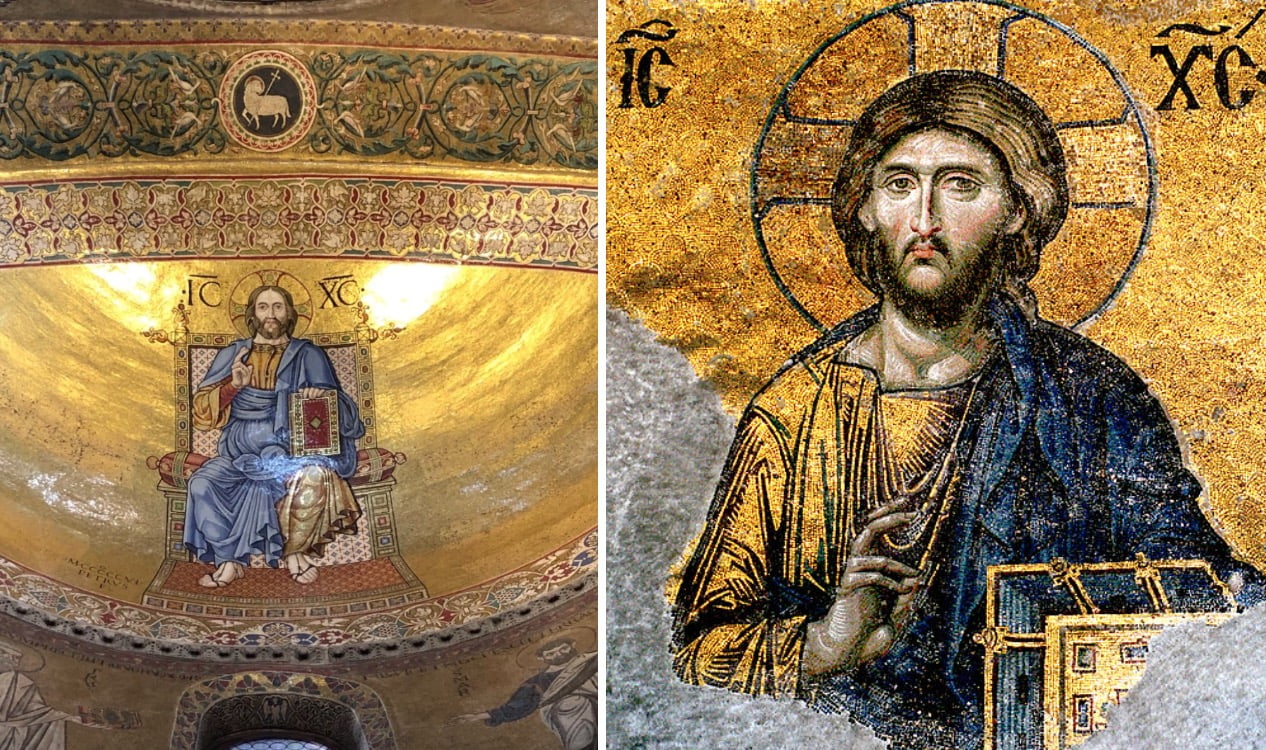
On the left is the depiction of Jesus in St. Mark’s Basilica, on the right is Jesus from the Hagia Sophia, now in Istanbul.
Fortunately they couldn’t steal and transfer the mosaics from the Hagia Sophia in Constantinople to Venice. They tried but it only caused damage; they had to master that technique themselves to replicate the magnificent atmosphere that existed in the Hagia Sophia.
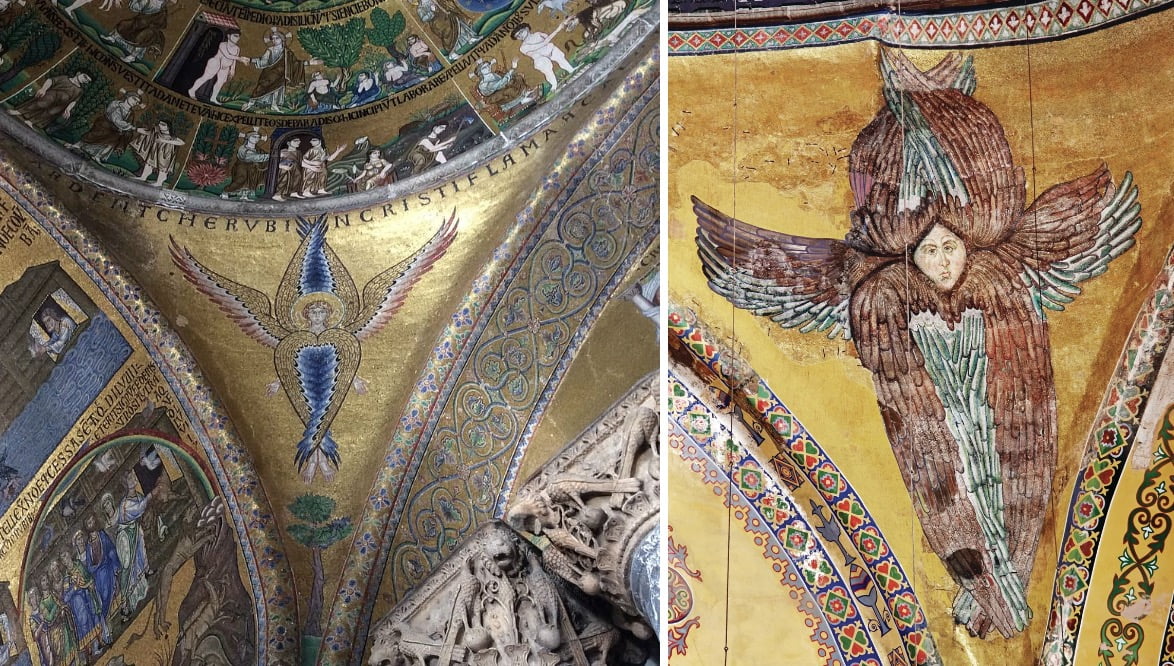
The depiction of seraphim: left in St. Mark’s Basilica, right in the Hagia Sophia. Even the position of the seraphim is the same in the church.
The end result was truly magnificent and although St. Mark’s Basilica is much smaller than the Hagia Sophia, it still resembled its model. Conceived in sin, the daughter church reminded of its violated mother.
Venice was built on plundered wealth. The sheer quantity of war booty plundered by Venice is best illustrated by an anecdote: when Napoleon conquered Venice in the 18th century, he took several tons of gold from the treasury, originally from Constantinople—six centuries later.
Pirates Built a Church
In the beginning Venice was founded by the Veneti, Western Slavs or Wends. Hungarians still refer to Slovenes as Wends. It was a fishing village on marshy islands. They engaged in a bit of trade and fishing and a bit of piracy.
The turning point came when they stole the relics of evangelist Mark from Alexandria from Muslims (828 AD). They hid the relics under pork to smuggle them out.
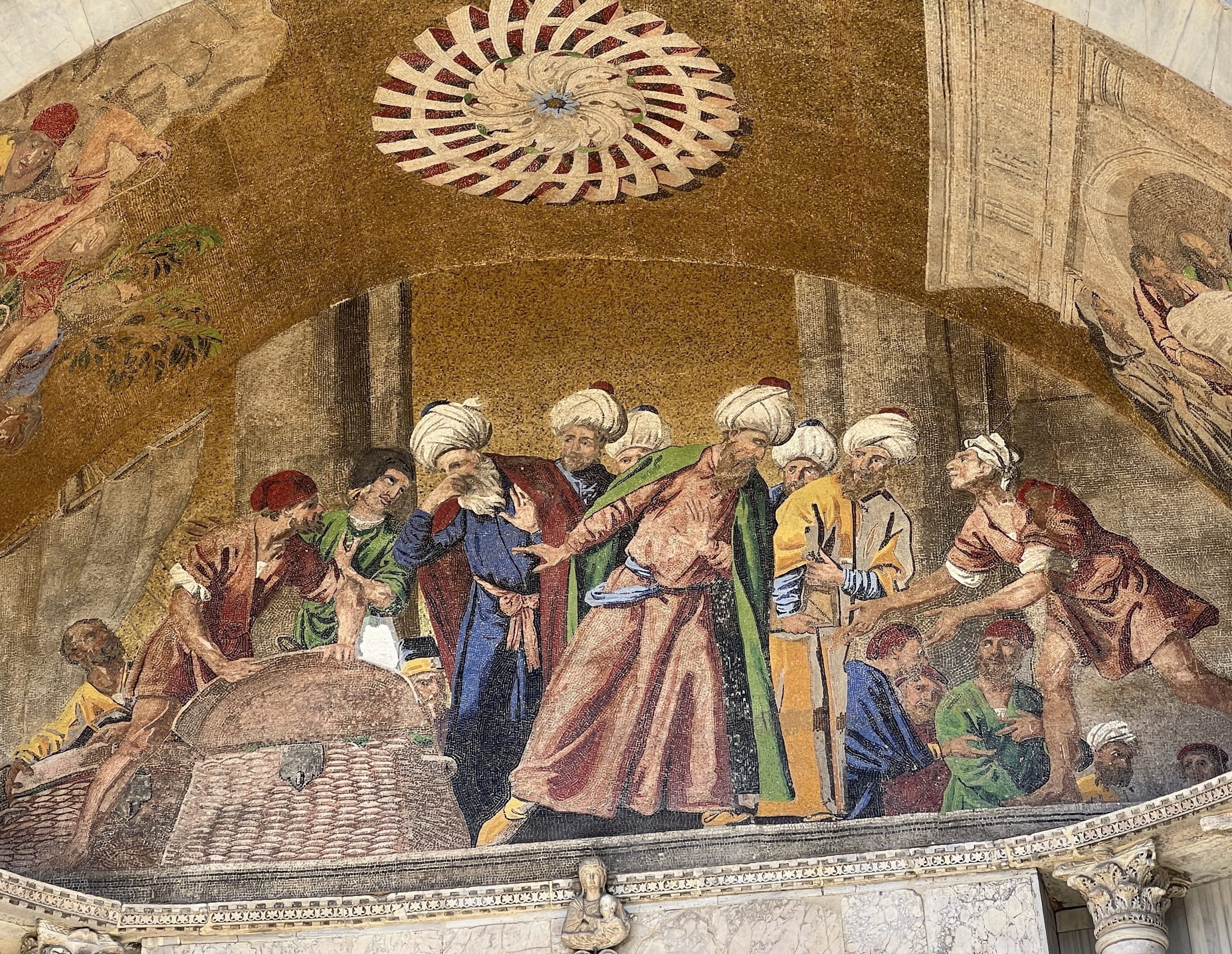
The theft of the relics of evangelist Mark hidden under pork meat so that Muslims wouldn’t find them.
When the relics arrived in Venice, they were placed in the old basilica, which was previously dedicated to St. Theodore. That church was made of wood and burned down, so a new basilica was built for St. Mark’s relics. Initially, the basilica wasn’t particularly special until the conquest and looting of Constantinople when it became crammed with artworks, columns, statues, and gold.
The Venetians tried their hardest to make their new church resemble Hagia Sophia, but even with all the stolen wealth, they couldn’t replicate the domes built by Justinian in Hagia Sophia. The domes of St. Mark’s Basilica are fake, as you can see in the church’s plan.
The fall of Constantinople and who is to blame?
There are no doubts about who was to blame for the fall of Constantinople and what happened. The Venetians themselves proudly depicted it in the paintings adorning the walls of the Doge’s Palace. The paintings average 5 by 10 meters in size, making everything very clear.
The Doge’s Palace was the seat of power in Venice, housing the senate, and naturally, they showcased what they were proud of and the moment when they became independent and wealthy.
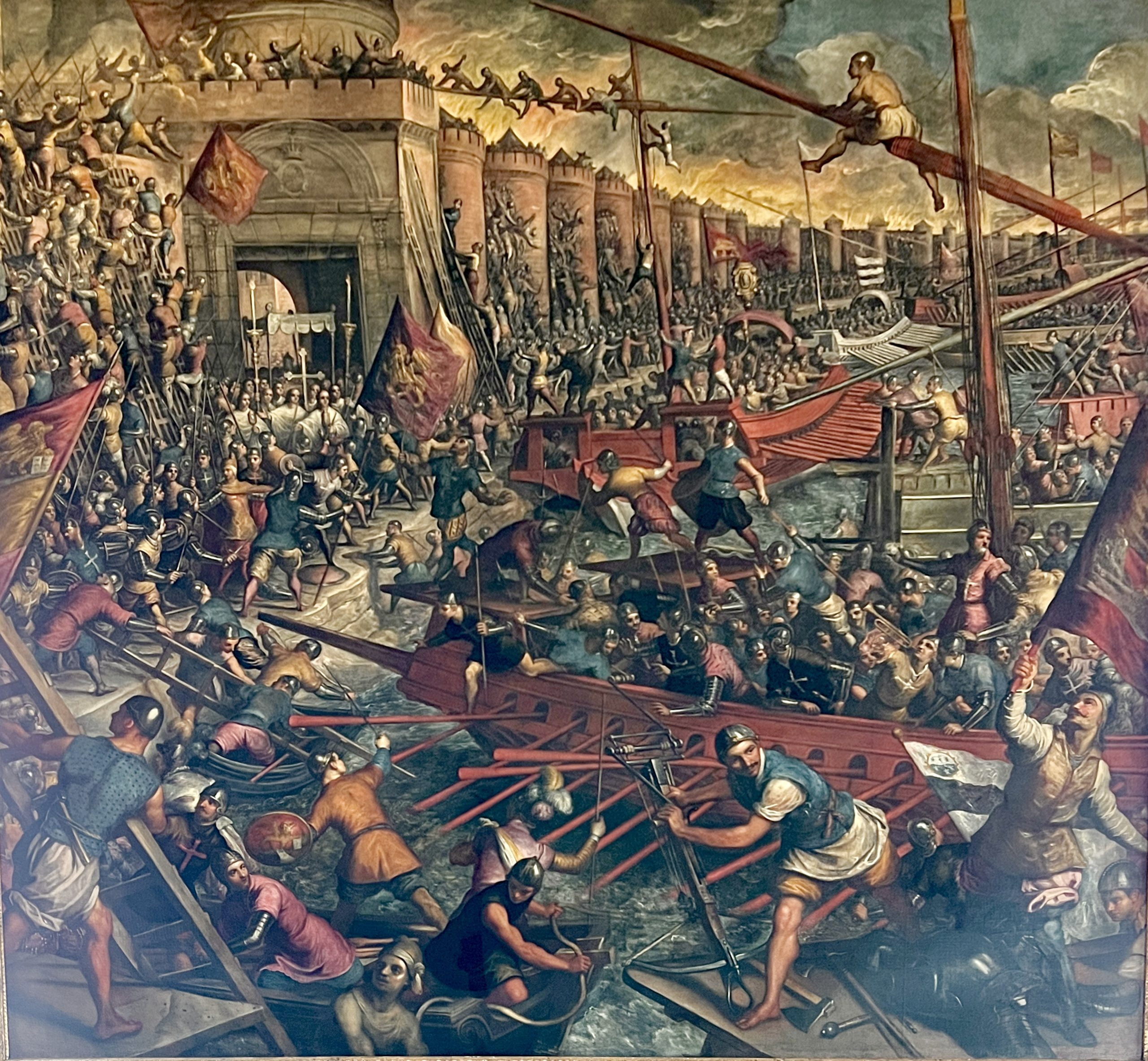
The Surrender of Constantinople, painted by Tintoretto in 1598. Painting in the Doge’s Palace in Venice.
In this painting, the scenes of battles on the walls of Constantinople can be clearly seen, with Crusaders, who sailed from Venice, climbing the walls and jumping from the masts of galleys onto the city’s walls. Byzantine chroniclers of that time confirm these scenes.
Another painting on the same theme shows Catholic Crusaders and mercenaries attacking the walls of the Orthodox Empire.
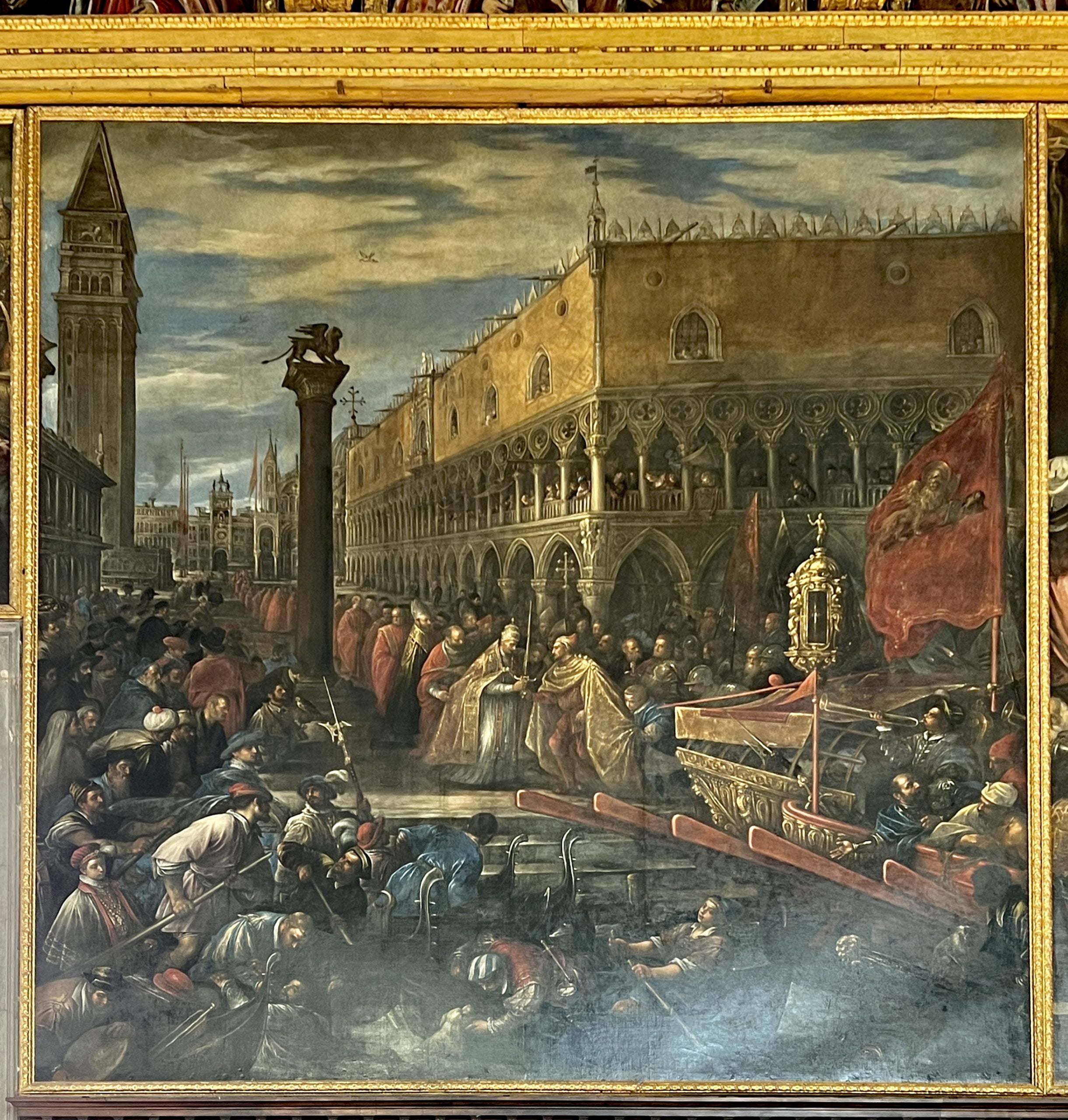
Baldwin of Flanders elected as the emperor of Constantinople by Doge Dandolo and leaders of the crusade. Oil on canvas by Andrea Michieli.
Constantinople was conquered. The Vatican finally executed a coup with Venice’s help. The Pope summoned mercenaries from across Western Europe, and Venice provided ships, weapons, and additional troops. After the victory, Baldwin of Flanders came to Venice, where the Doge and his comrades chose him as the first Latin emperor of Constantinople.

The coronation of Baldwin of Flanders as the Latin emperor of Constantinople.
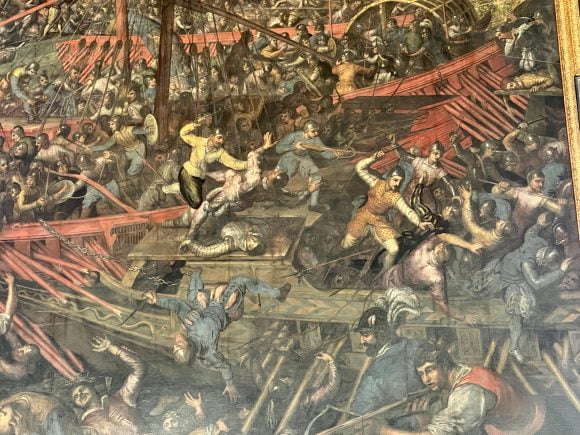
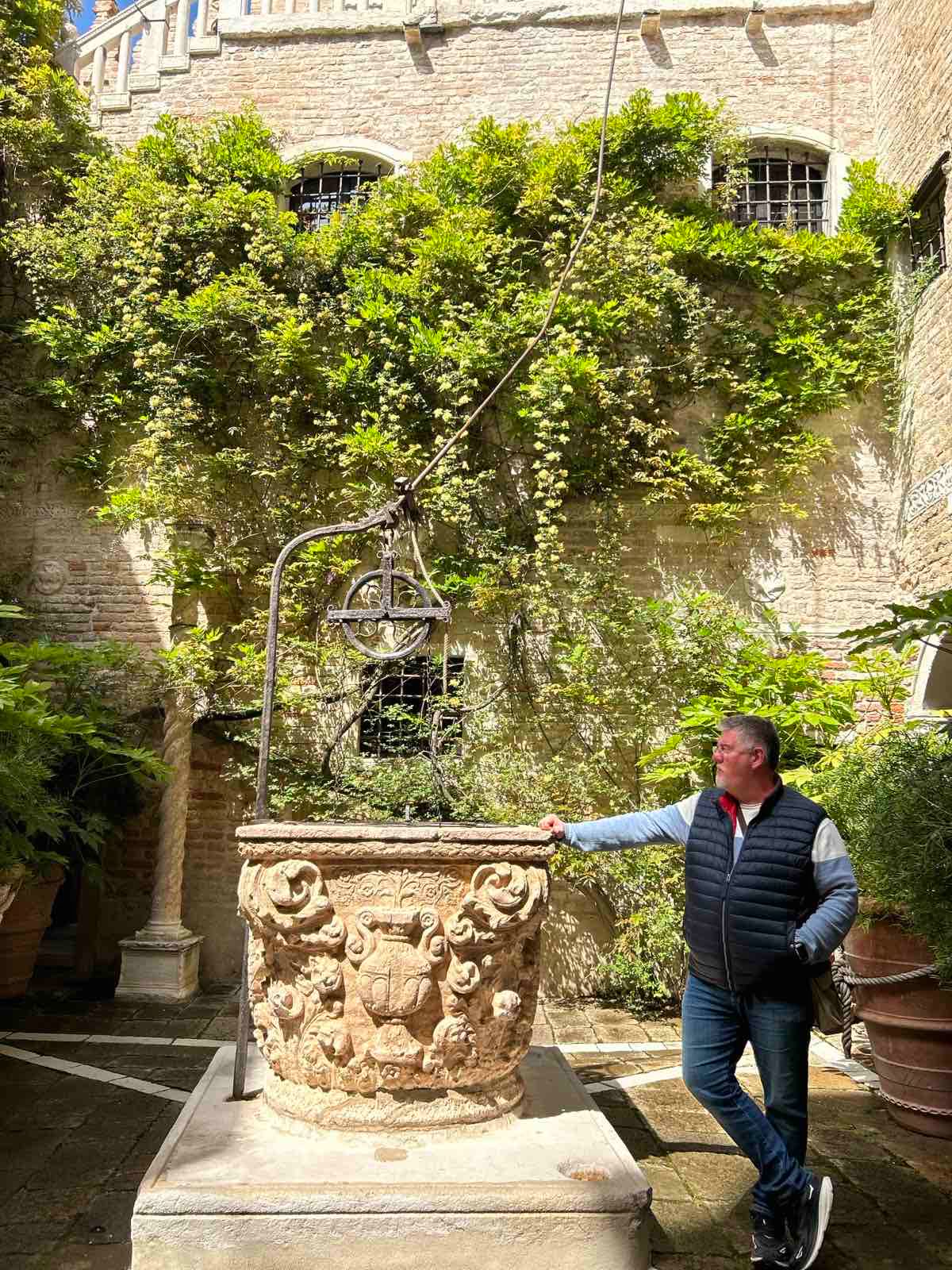
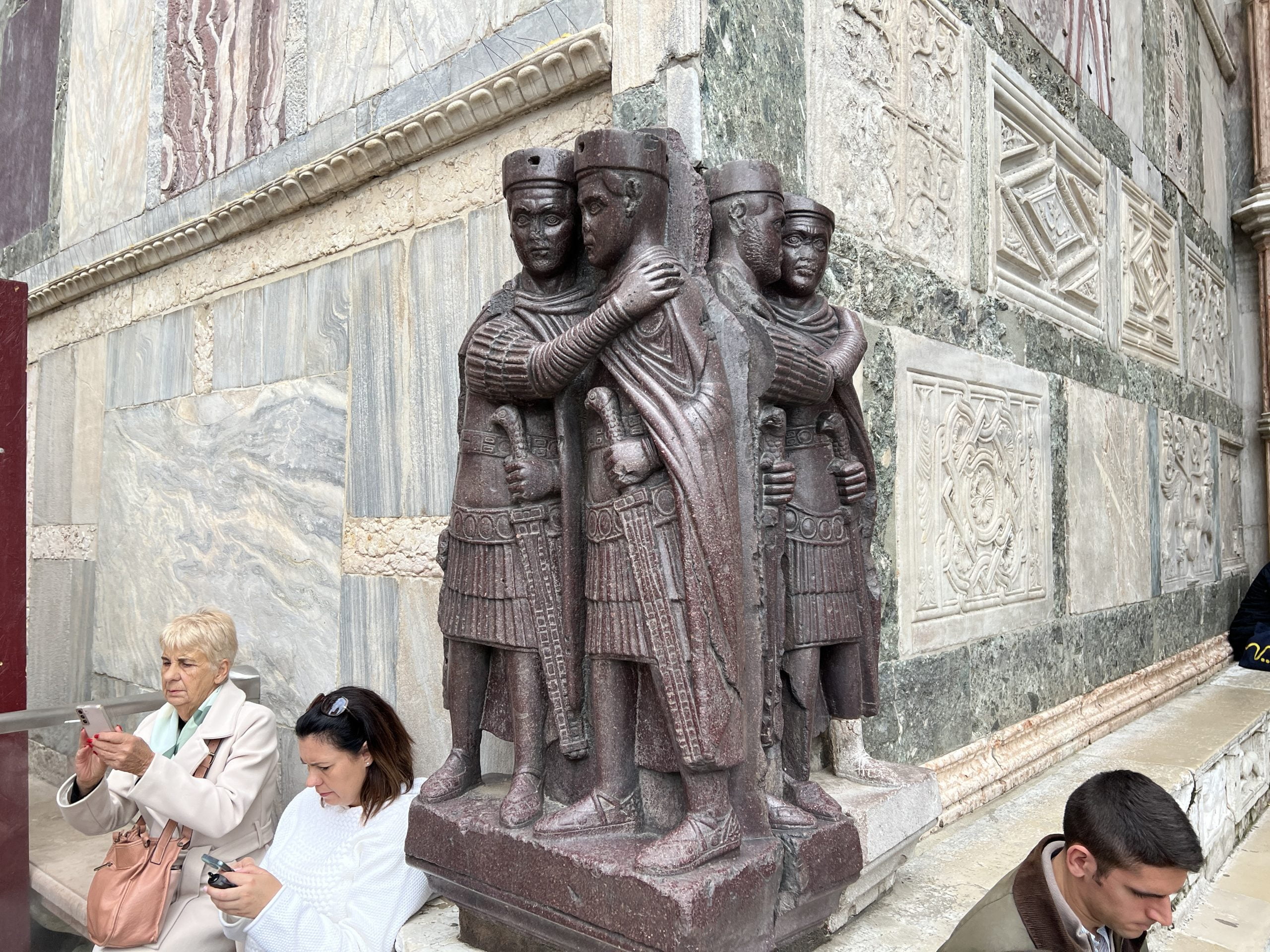
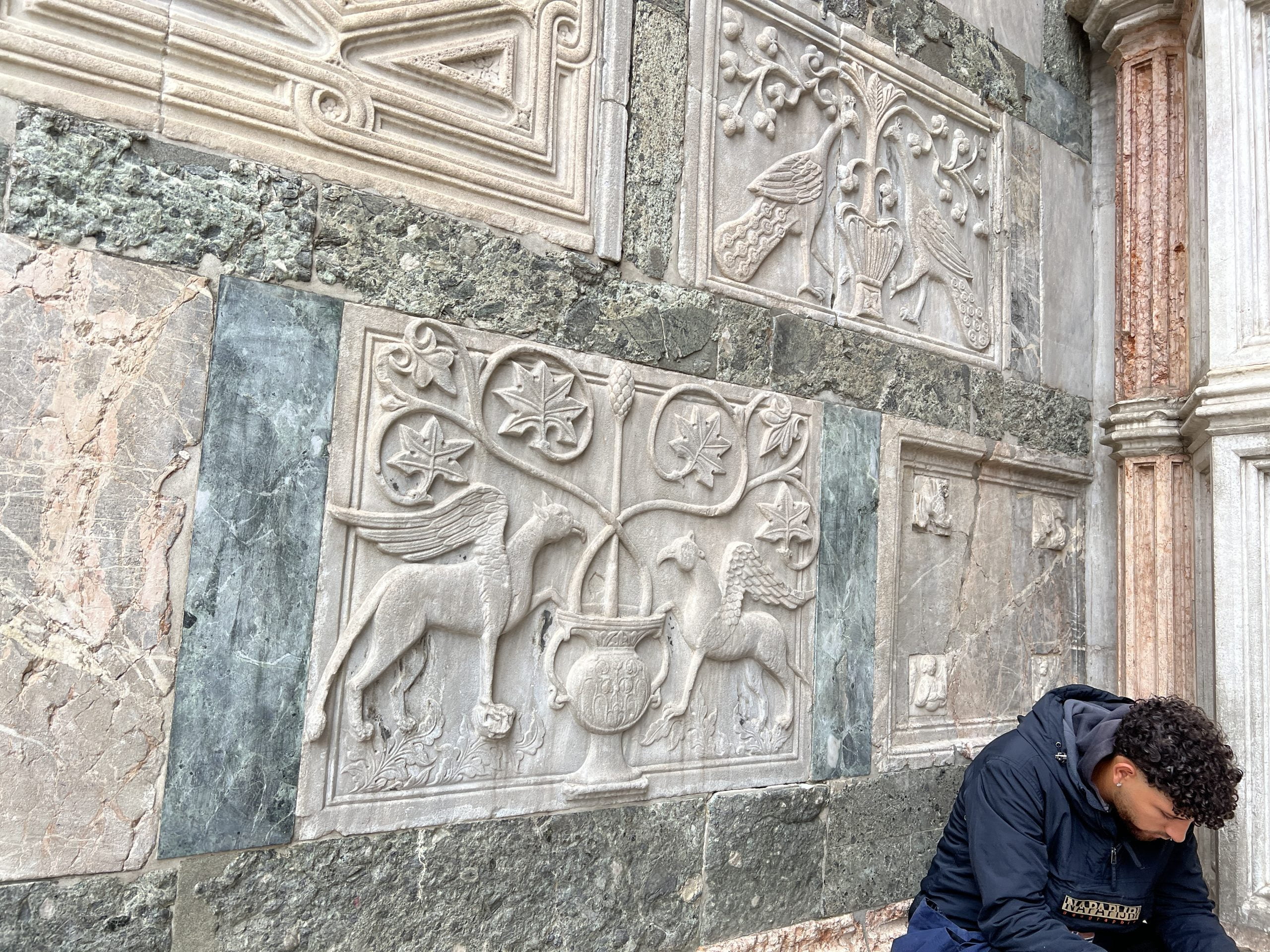
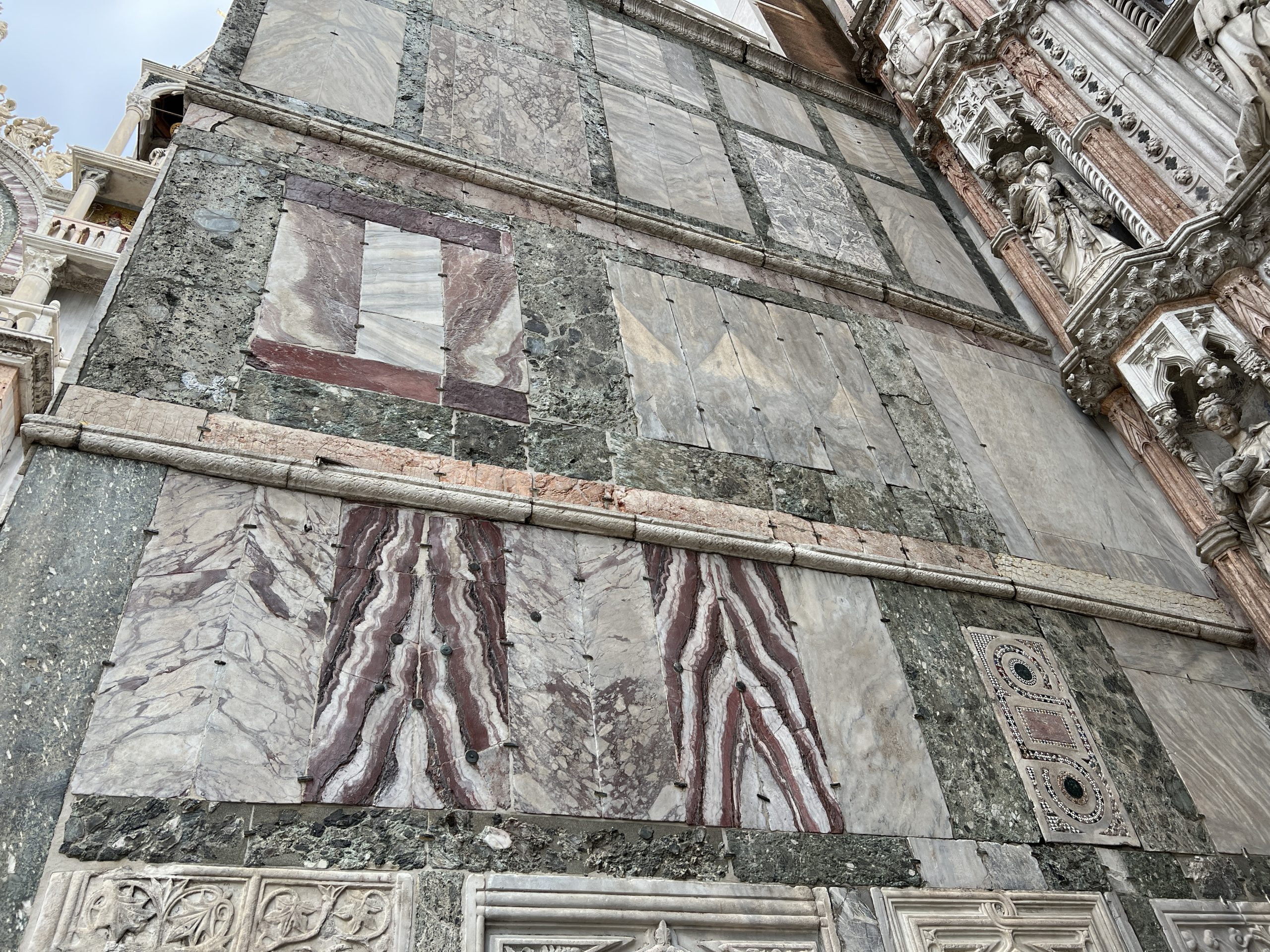
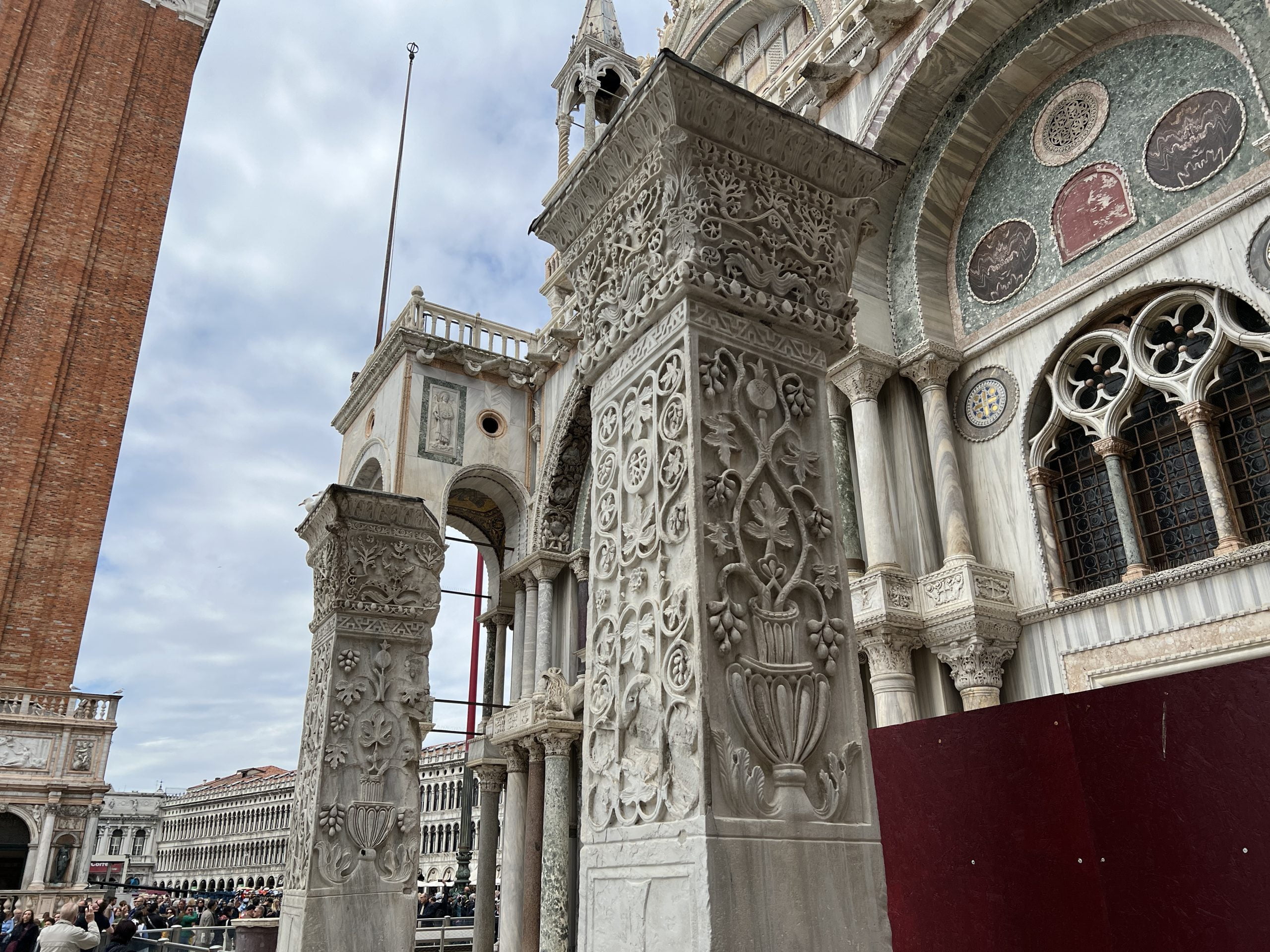
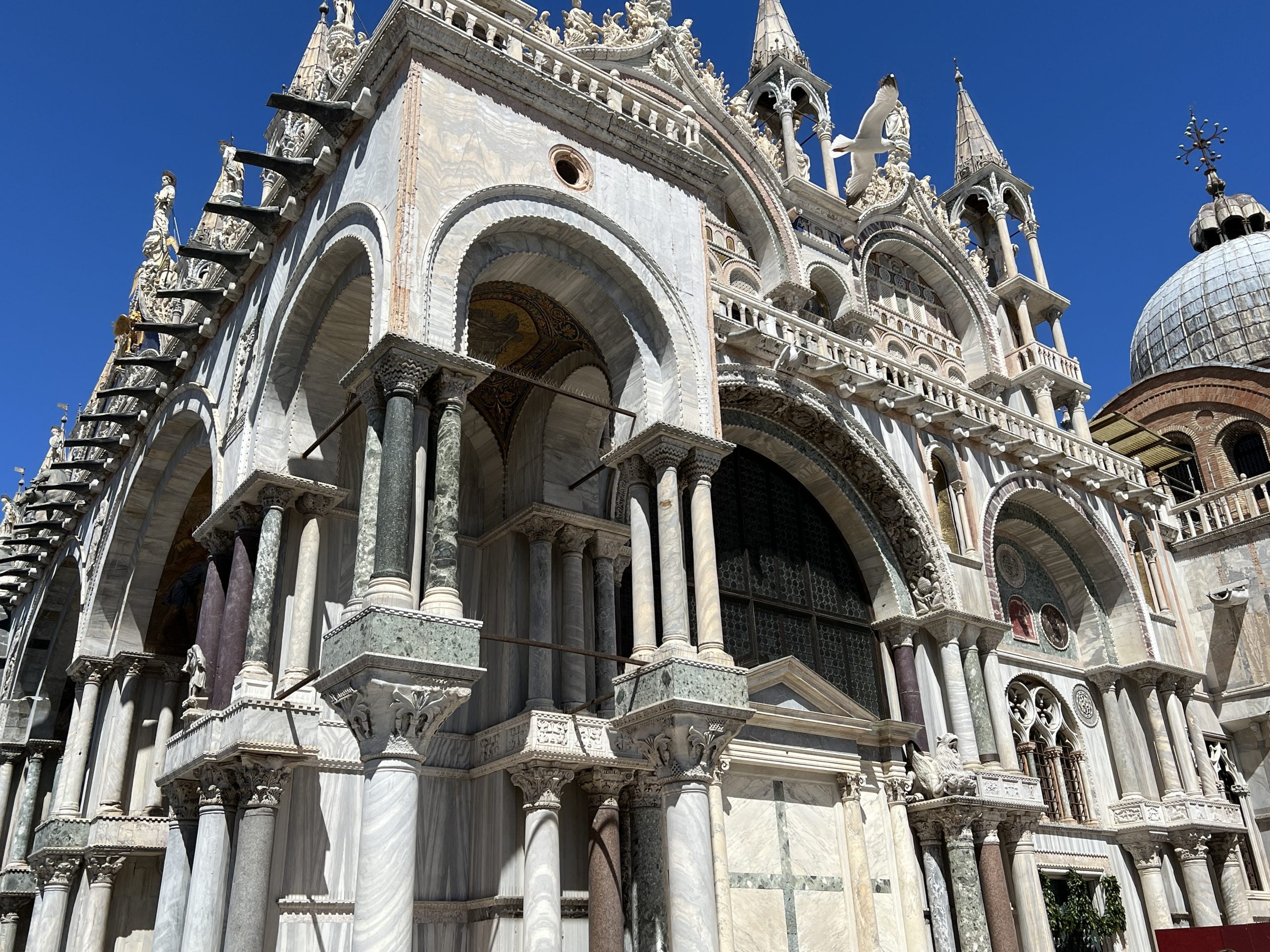





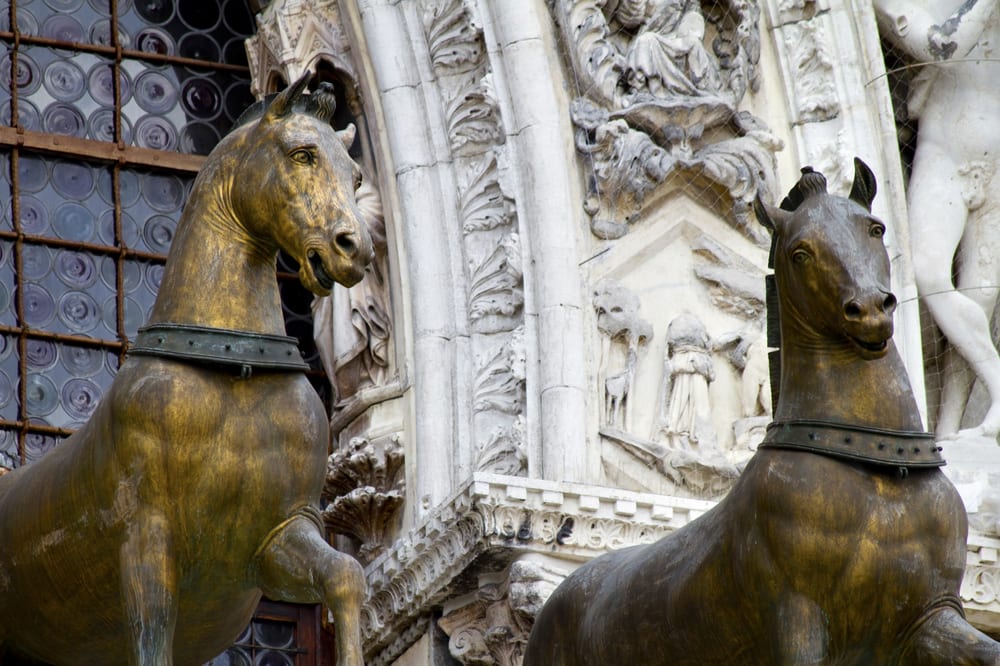
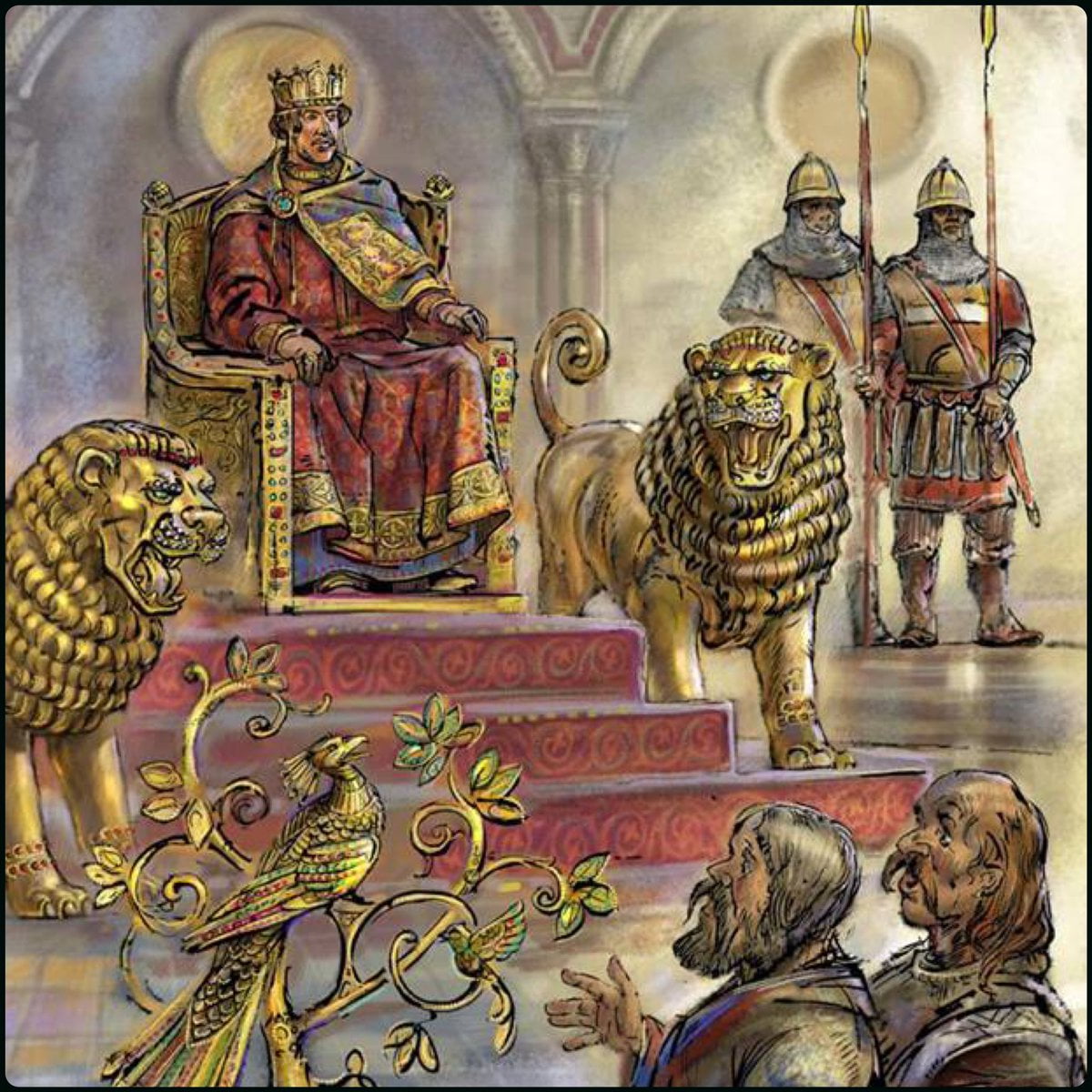
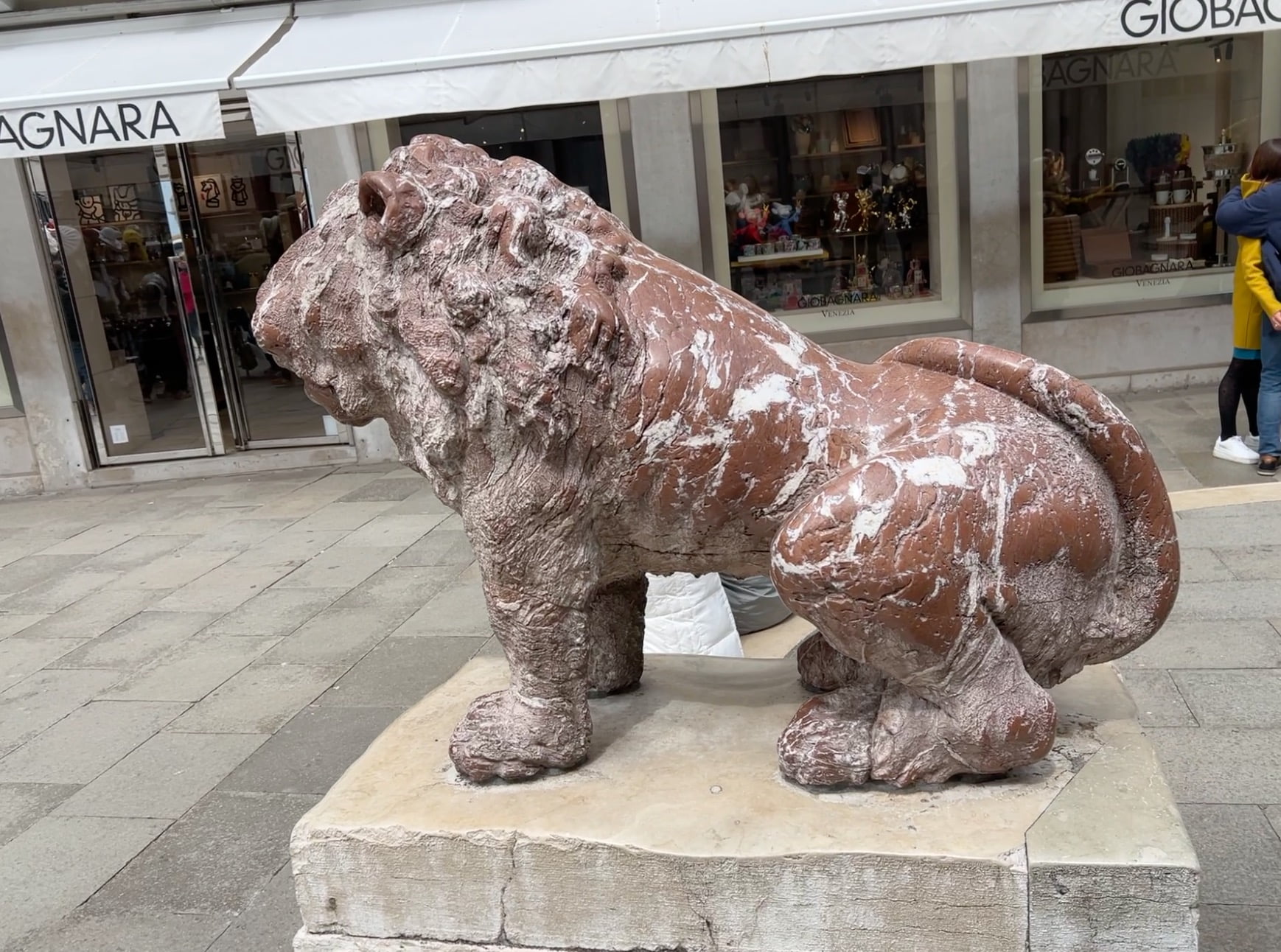
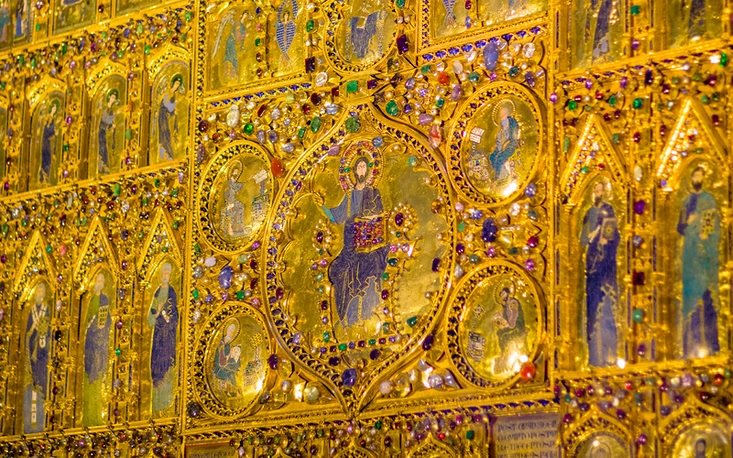
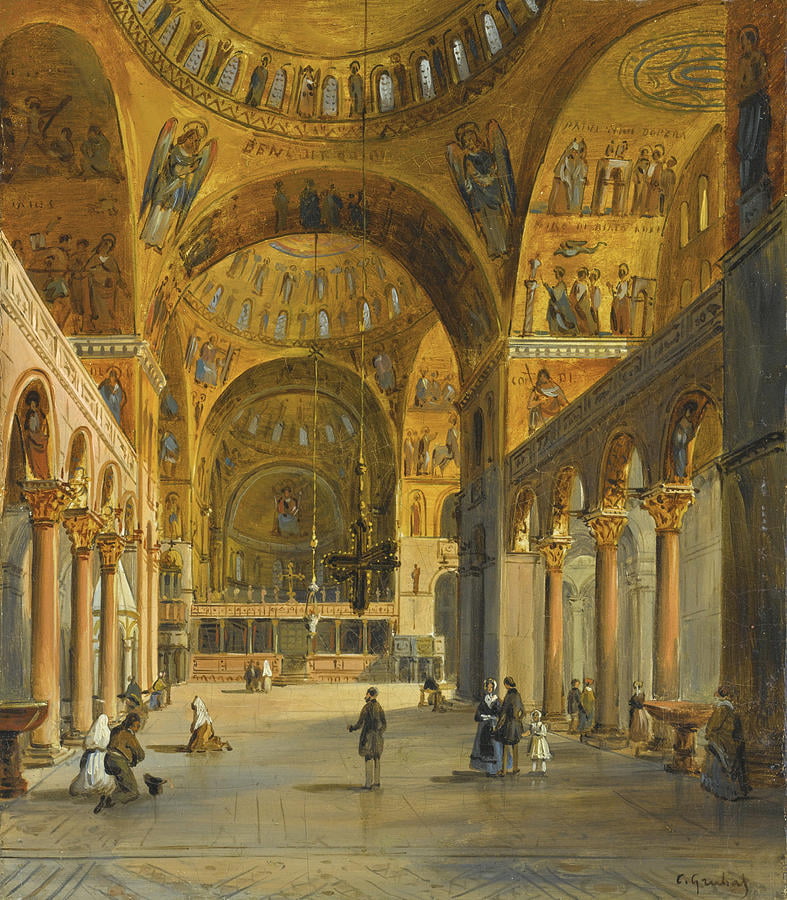
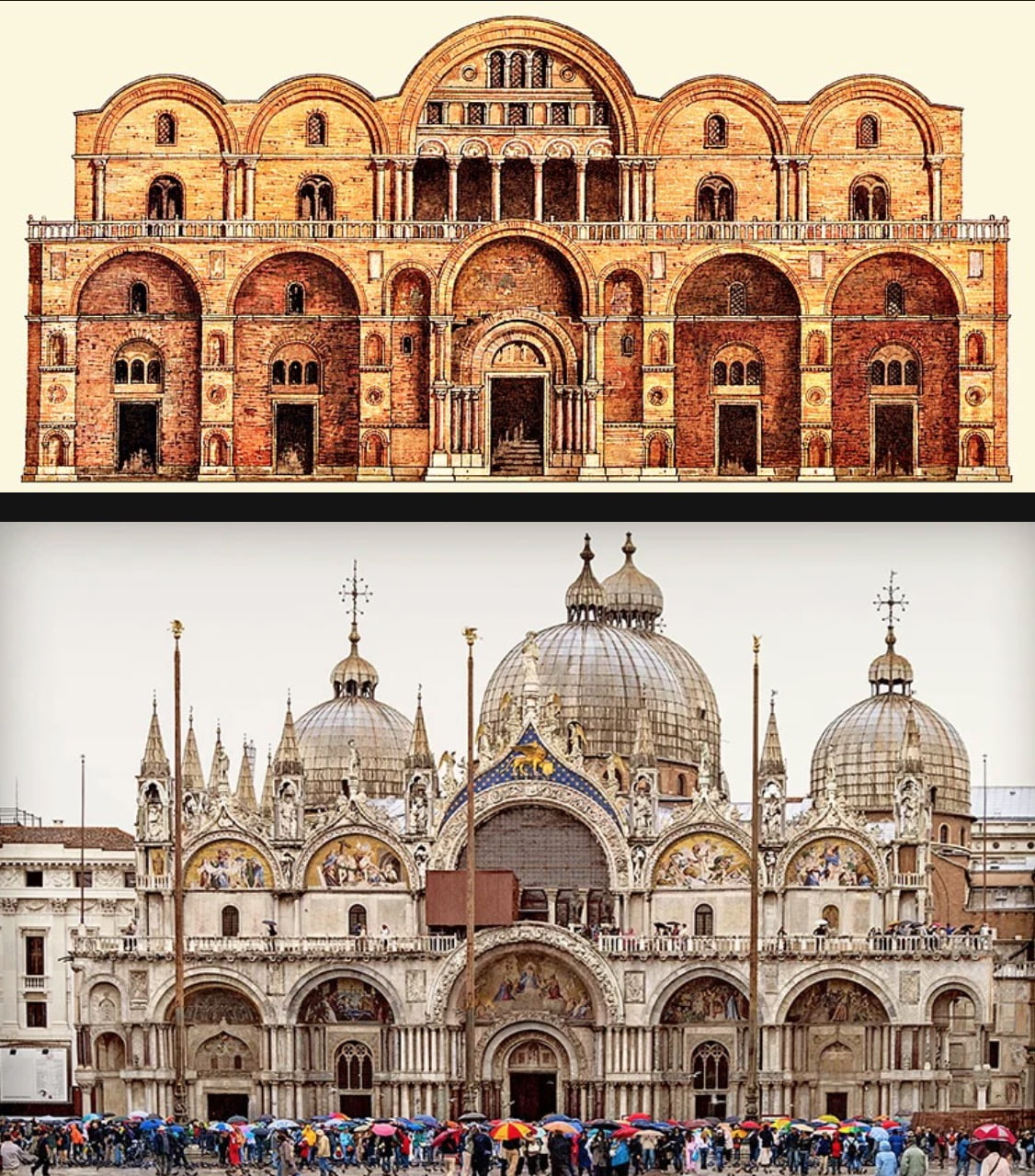
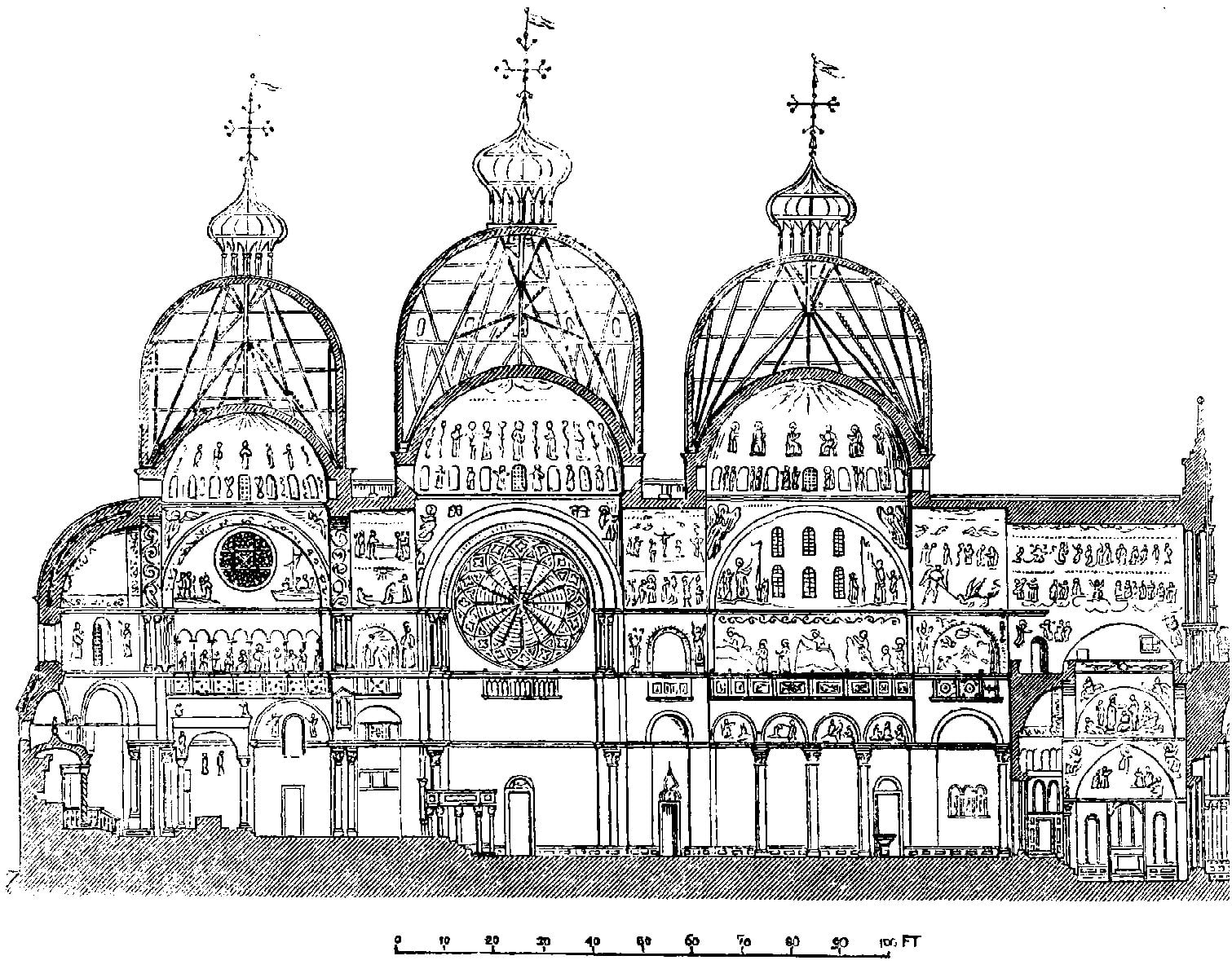
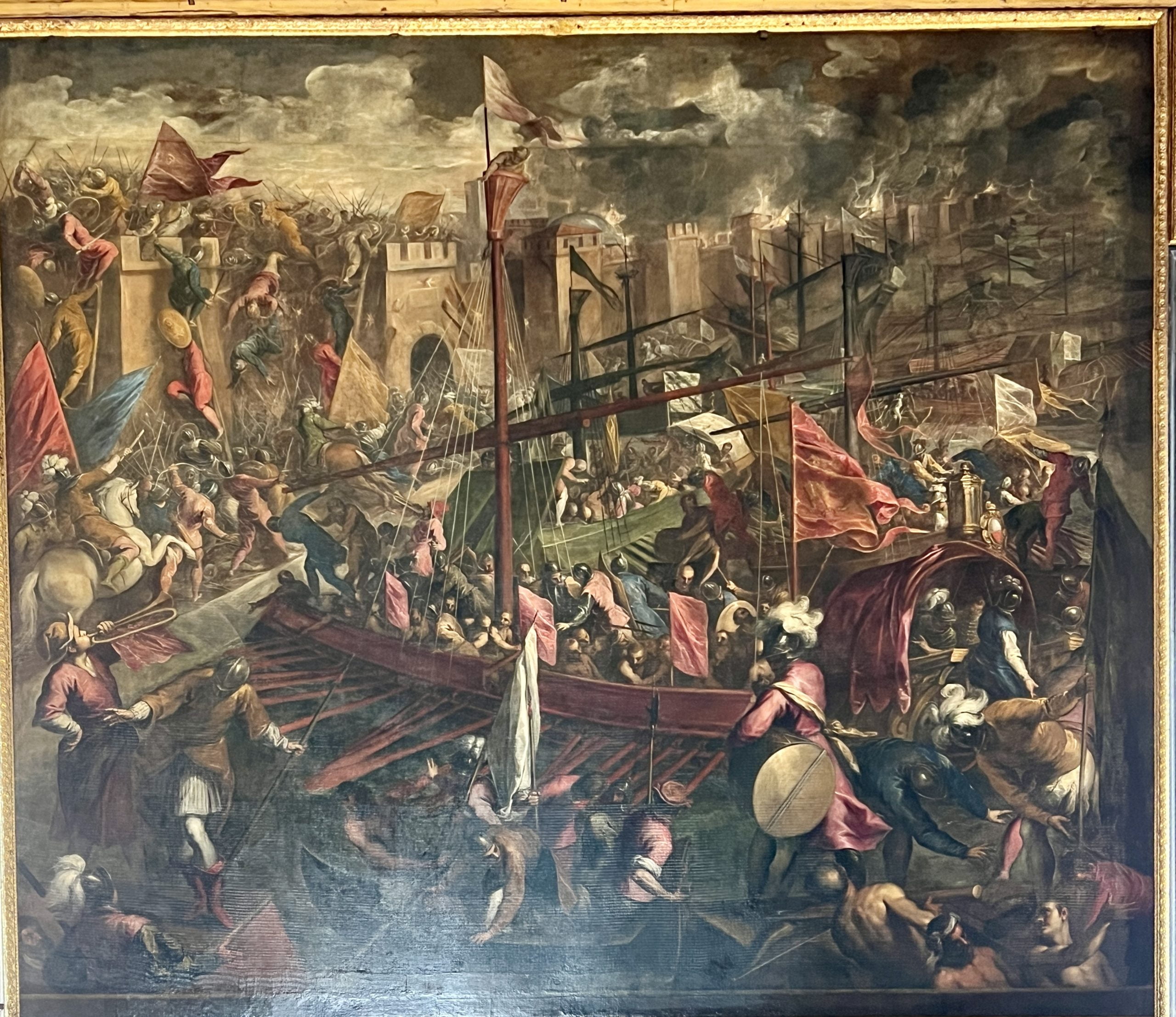
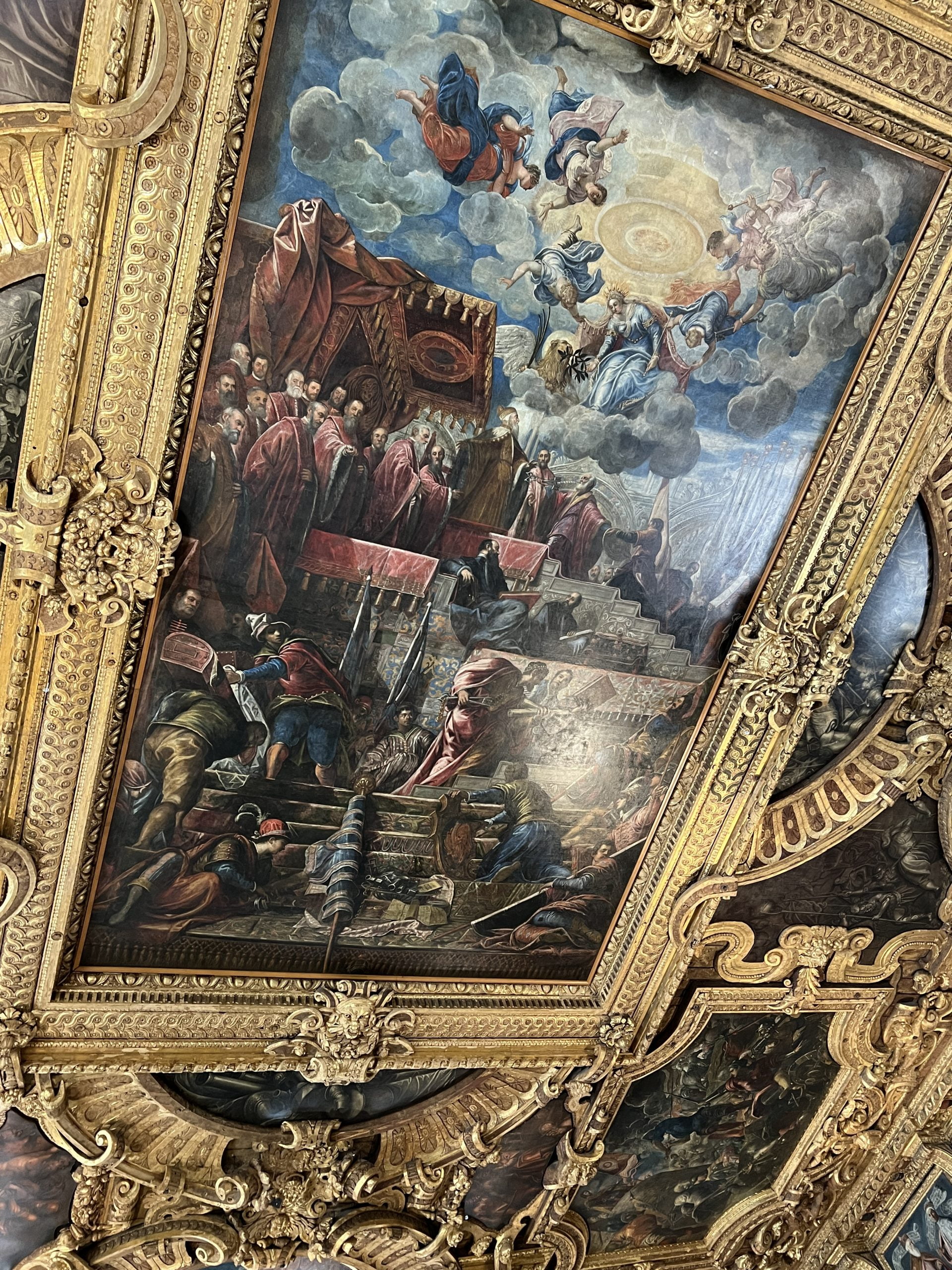
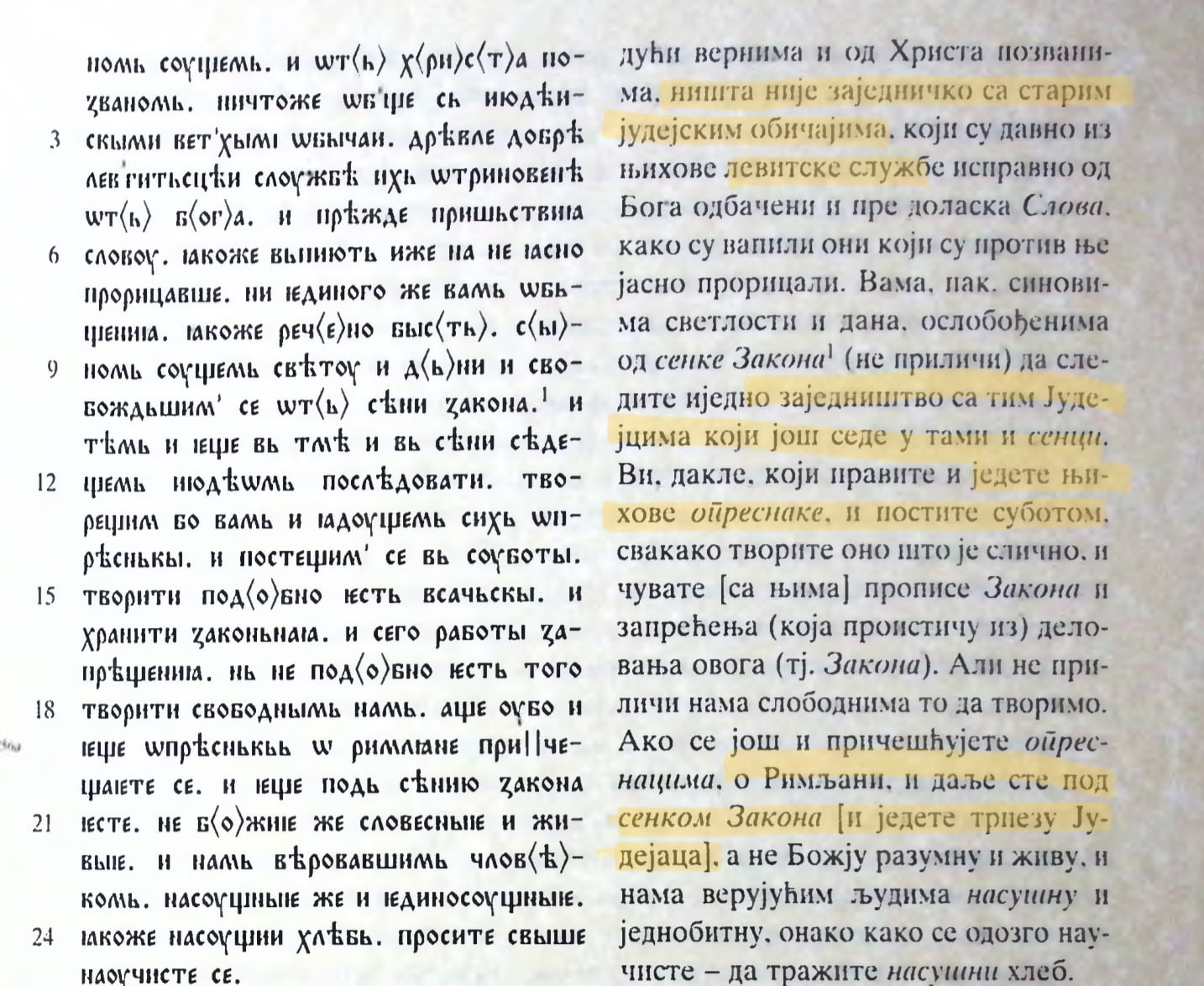
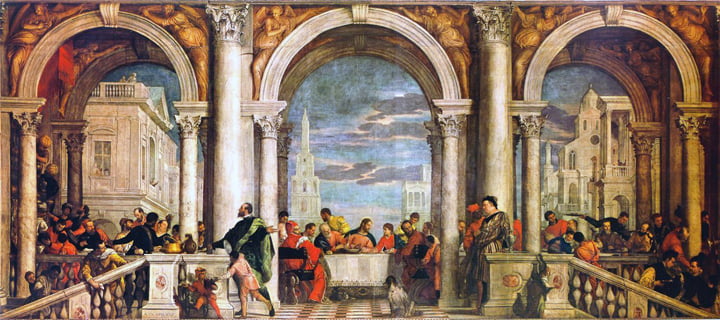
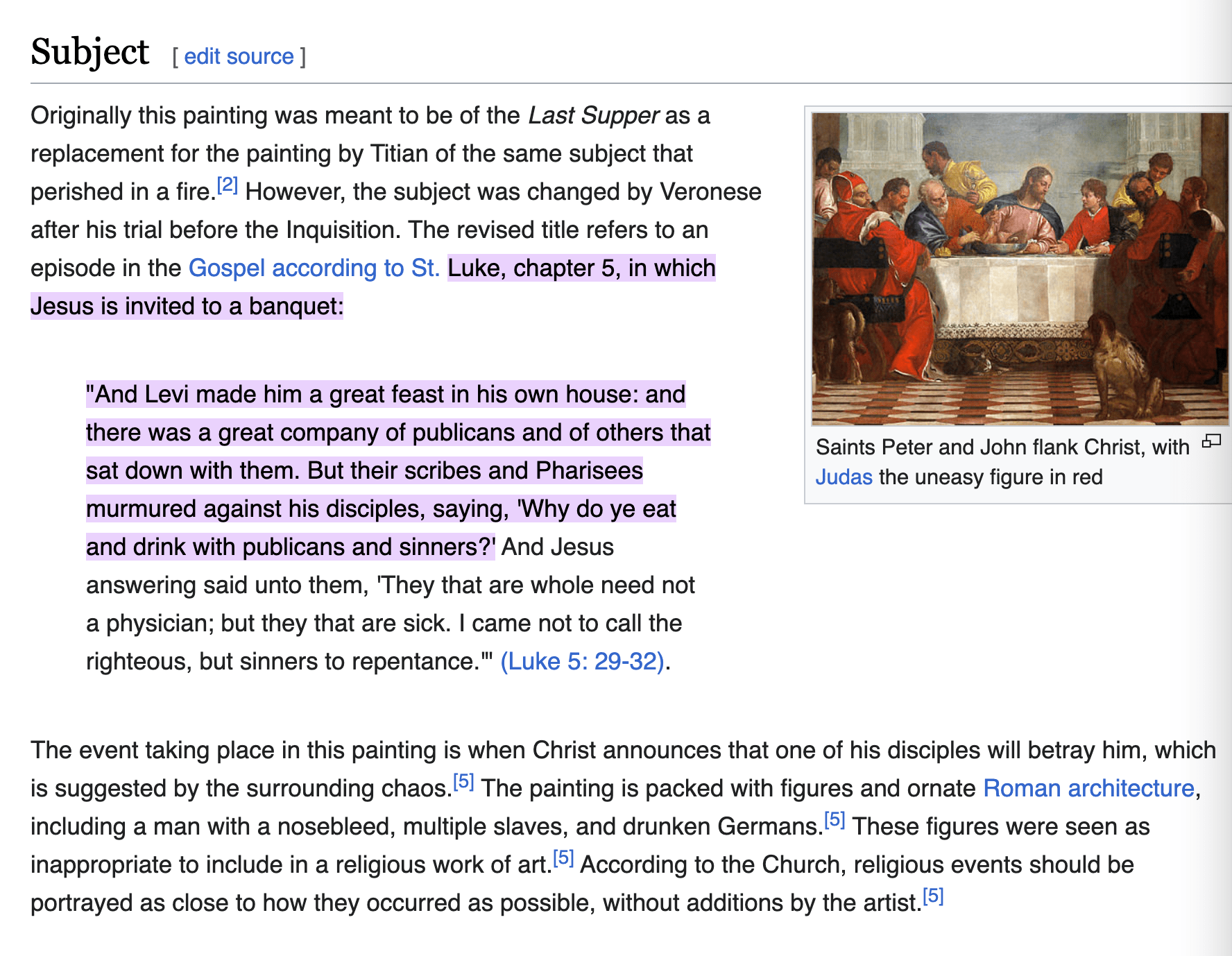

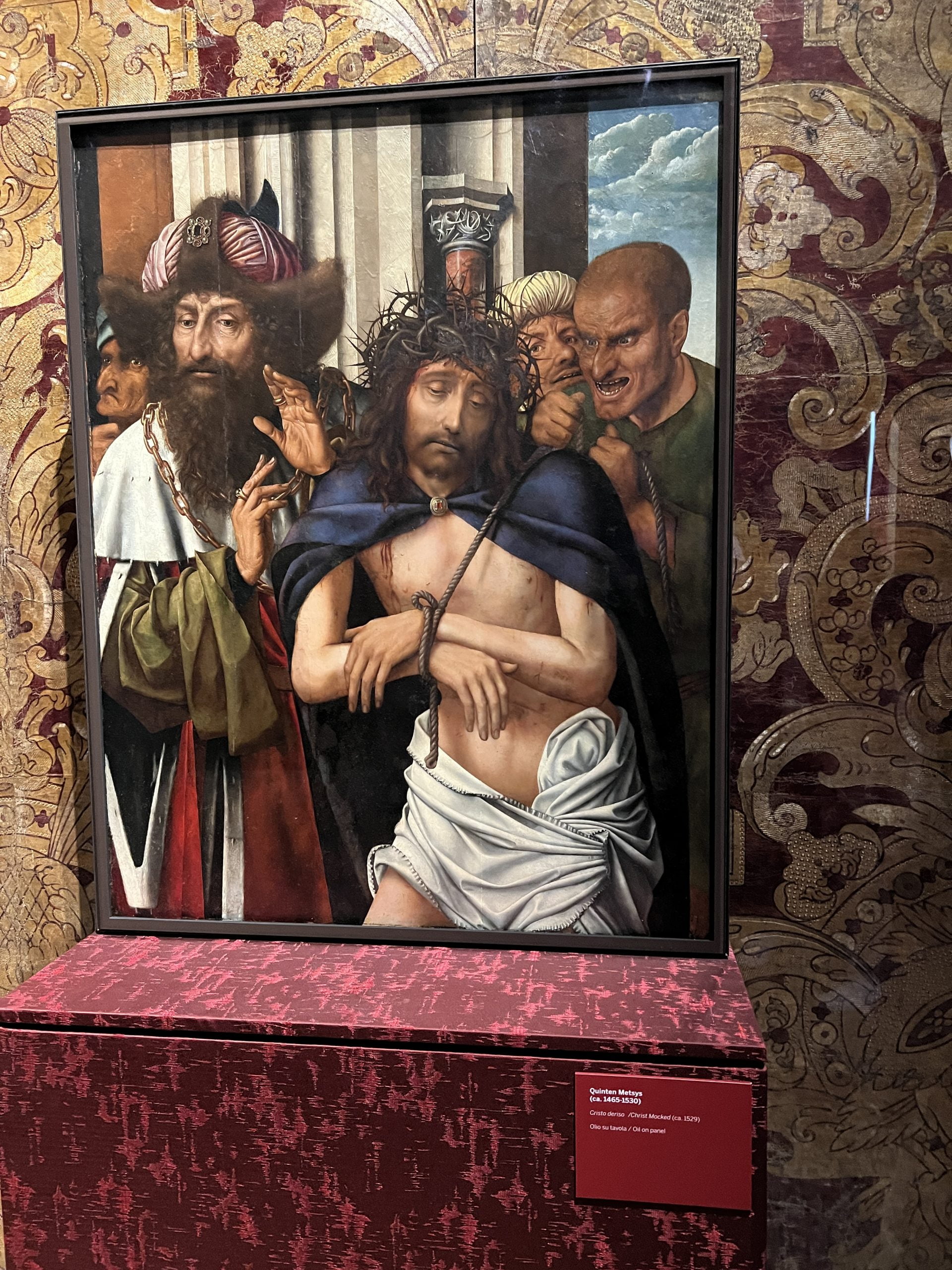
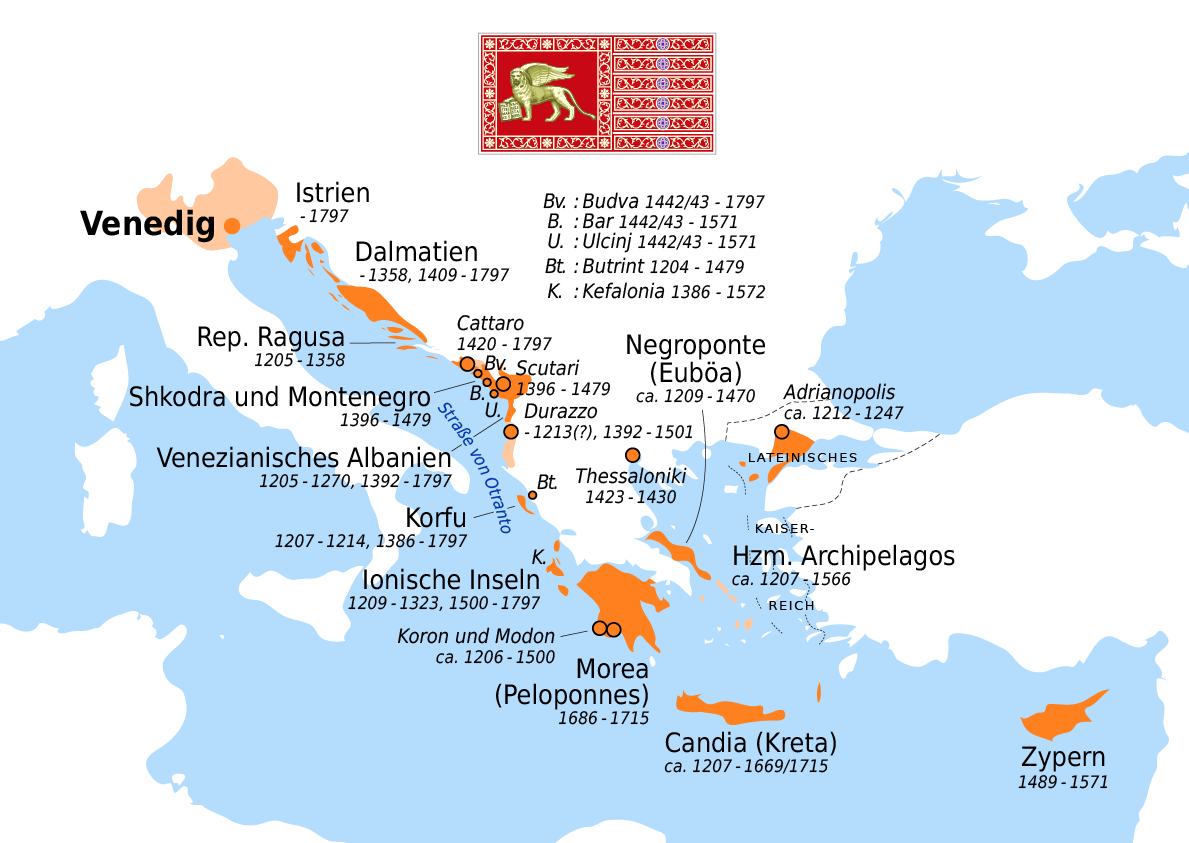
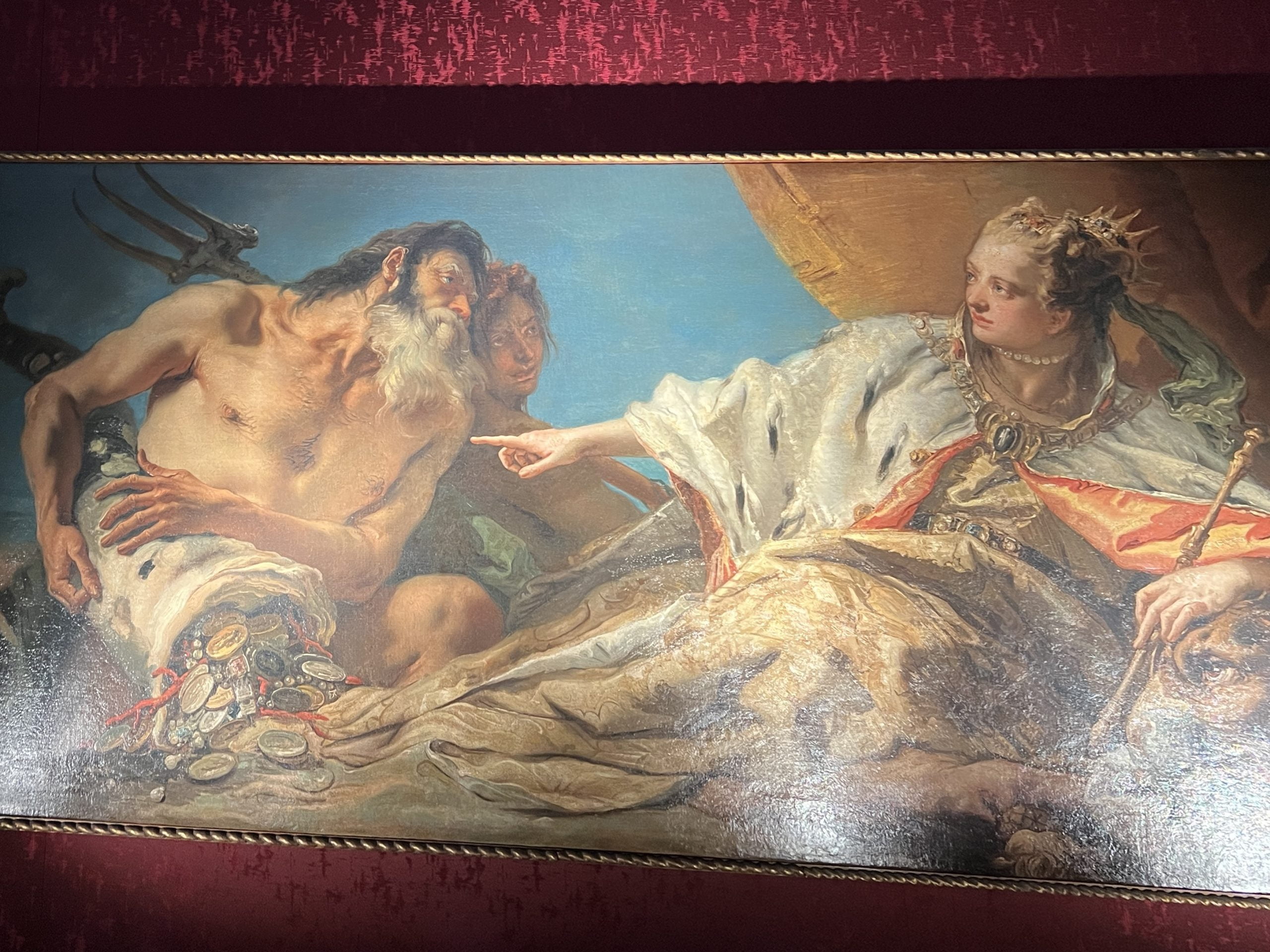
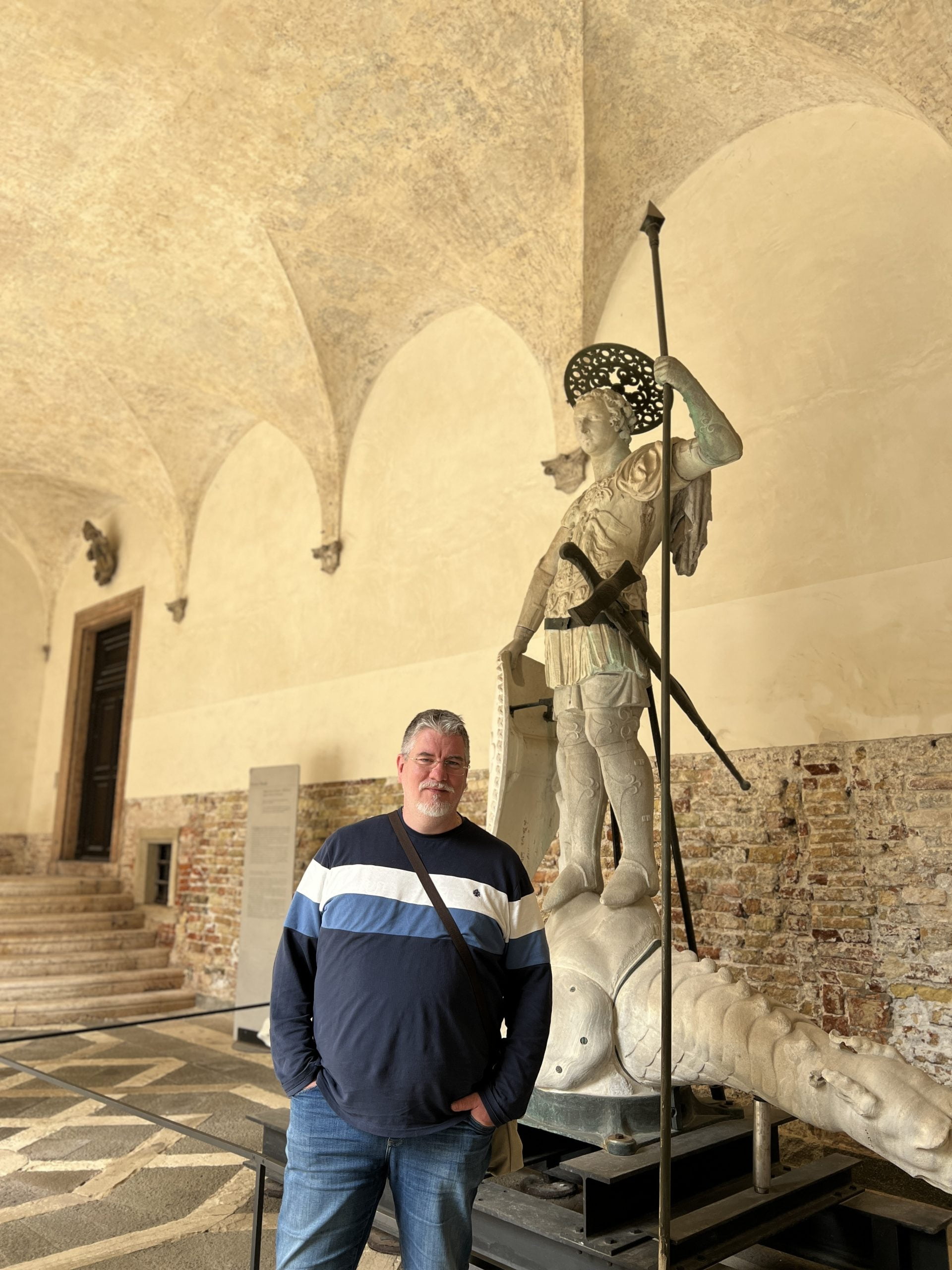
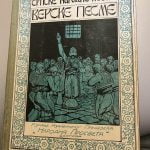
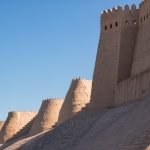
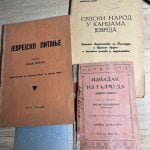

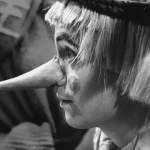




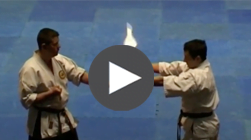
Ovo je fascinantno!Pa sve i da se moze nama bi trebao citav vek samo da vucemo sve sto je pokradeno a pokradeno je 99% onog cime se oni hvale i sto im u ostalom sluzi kao neki “dokaz” velicine katolicke vere..uzas.Pa oni su nastali na pljacki i paljenu zivih ljudi na lomacama i to je cinjenica nisam ja to izmislio, uzas iskreno
Интернет додаје: премијер Bенизелос је из венецијанске породице грка, повратник. Тема за размишљање.
Израз „јудео-хришћанство“ је погрешан антиправославни израз. Тај израз у себи садржи све хришћане и све хришћанске деноминације, што представља озбиљну глупост. Тај језуитски израз и сорошоидни новоговор треба забранити за употребу, па ће онда нека научна будала морати да употреби конкретан израз „јудео-православно-хришћанство“, па да га онда и наши и њихови, као лудака сместе у лудницу где би му било место.
Сви језици се треба држати конкретног и егзактног смисла говора, па би тако ове људе из данашње теме требало назвати „јудео-римокатолици“ па бисмо одмах знали на кога се мисли.
Следећи добар пример су „јудео-бољшевици“. Њих можемо лако препознати као неприкосновене учеснике у власти новоформираног СССР. Конкретно, у тој власти је било 82,31% Јевреја. Значи, Јевреји Бољшевици – нико не може казати да је то лаж.
Христос Васкрсе.
Postovani Milose, nekoliko puta sam procitala ovaj Vas tekst. Malo je reci da ne fantasticno napisan. Hvala vam sto nas obrazujete. I molim Vas, skupite jednog dana sve ovo sto ste do sada napisali I objavite knjigu. Pozdrav veliki I samo pisite.
Хвала вам Зоро најлепште. Потрудићу се да направим неку књигу од ових текстова.
О овој пљачки, веровали или не, постоје документарне емисије на National Geographic kanalu, на History, itd. Lično sam gledao dokzmentatac.
Pozdrav Miloše ,
Baš nedavno nailazim na jednu knjigu o bazilici sv. Marka i gledam na slici ukradene predmete, i ispod piše “poklon iz Carigrada” hahaha. Baš smo se smijali supruga i ja.
:)